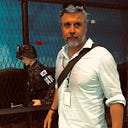Remembering El Che, 50 years since his death
In Latin America we simply call him ‘El Che’. In this uncomplicatedness there is a sense of personal familiarity and human attachment to the most iconic guerrilla fighter in history.
This year, October 9, marks the 50th anniversary of the death of Argentinean born Ernesto “Che” Guevara de La Serna; or perhaps — to be terminologically accurate — his execution in 1967 in the small southeastern Bolivian town of La Higuera.
A day earlier, October 8, the Bolivian army and its US intelligence backers had captured him. His was injured. Next day he was coolly executed putting an end to his 1966 -1967 Bolivian guerrilla campaign. His body was taken the nearby town of Vallegrande, not far from La Higuera.
Days after his execution the Argentinean writer Julio Cortázar wrote ‘I had a brother’, a poem dedicated to him.
‘I had a brother.
We never saw each other but it didn’t matter.
I had a brother who wandered through the mountains while I slept
I loved him in my own way,
I took his voice free as water,
I walked sometimes close to his shadow.’
Born in the Argentinean city of Rosario on June 1, 1928, El Che belonged to a financially comfortable Argentinean family with socialist ideas. He was asthmatic and a voracious reader.
One of the most iconic photos of El Che is of him up a tree reading in the middle of — as Ricardo Puglia put it in his 2005 essay ‘The Last Reader’ — ‘the desolation and the terrible experience of a guerrilla under siege.’ El Che’s most precious belongings were — as Puglia writes — ‘his asthma inhaler and his books.’
But it was not in his readings — as a young man — that his radical political awakening ensued; but in his numerous trips across several Latin American countries. In his trips — one of them immortalized by Brazilian film director Walter Salles in film The Motorcycle Diaries — El Che witnessed the history of exploitation and discrimination suffered by the largest human population of the region, the poor. ‘Me, I’m not the same me, at least not the same spiritual me. Wandering around our America has changed me more than I thought,’ he wrote after one of his epic journeys.
After the successful 1959 Cuban revolution El Che became the Fidel Castro’s right hand man. The two men, however, began drifting ideologically apart. In his excellent 1997 book, ‘Che Guevara: A Revolutionary Life’, Jon Lee Anderson, writes about the close relationship that Che Guevara developed with Mao Zedong. Both men met several time and shared the same reading of Marxism.
El Che became close to the Chinese Communist Party and he and Mao agreed that the seed of the revolution was among the rural peasants instead of the urban proletariat. This ideological closeness between Guevara and Mao made the leaders of the former Soviet Union deeply unhappy. And also made Fidel Castro, who looked to the Soviet Union as a key ally, deeply uncomfortable.
In March1965 Guevara announced he was leaving Cuba to — as he said in his farewell letter to Fidel Castro — ‘bring the revolution and the guerrilla struggle to other latitudes.’ And as an internationalist he denounced the international financial model as an unequal model of commercial exchange and pointed the finger to the negative consequences of international financial institutions on the local economy of poor countries.
On April 24 of that year he arrived in the then Belgian Congo — now the Democratic Republic of the Congo. He befriended Joseph Kabila and attempted to set up a revolutionary platform for the African continent. It was a disaster.
And then he tried once again — this time in Bolivia where he arrived on November 3 of 1966. He set up his operation in Vallegrande, located about 80 miles southwest of the city of Santa Cruz. It was his last — and failed — attempt to implement the ideas of French Marxist intellectual Regis Debray’s ‘revolution in a revolution’ –to spread the revolution across the region via rural guerrilla movements.
A keen rugby, soccer and chess player, El Che was a thoughtful humanist whose ideas were associated with the notion of the ‘New Man.’ Emeritus Professor Barry Carr, from La Trobe University’s Institute of Latin American Studies, said El Che ‘began to think about these issues as early as the guerrilla war in the Sierra Maestra (1957 and 1958) but his ideas were also gestating during the period 1951–1956 when he was travelling in the Americas and in Guatemala in particular.
For Professor Carr, a Cuban scholar, ‘El Che was a man of often original ideas and not just a man of action.’ His ideas — Professor Carr argues — were focused mainly on economic and moral-political aspects of revolutionary transitions. ‘He thought and spoke a lot about the ways in which revolutionary transitions involved radical breaks in the way in which people thought about their attitude to work and politics.’
After his execution 50 years ago, the body of El Che remained buried in Vallegrande for 30 years. His remains — next to other six fighters- were only located in June 28 1997. His body was sent to Cuba and now rests in a memorial in Santa Clara, a town 270km east of Habana where El Che won the last battle of the Cuban Revolution and ended the brutal dictatorship of the US backed General Fulgencio Batista.
El Che was 39 when he was executed — and despite the many changes since the politically effervescent 1960s, he continues to be a source of inspiration for those who are in search for a more just and equalitarian society.
Originally published at medium.com on October 9, 2017.
